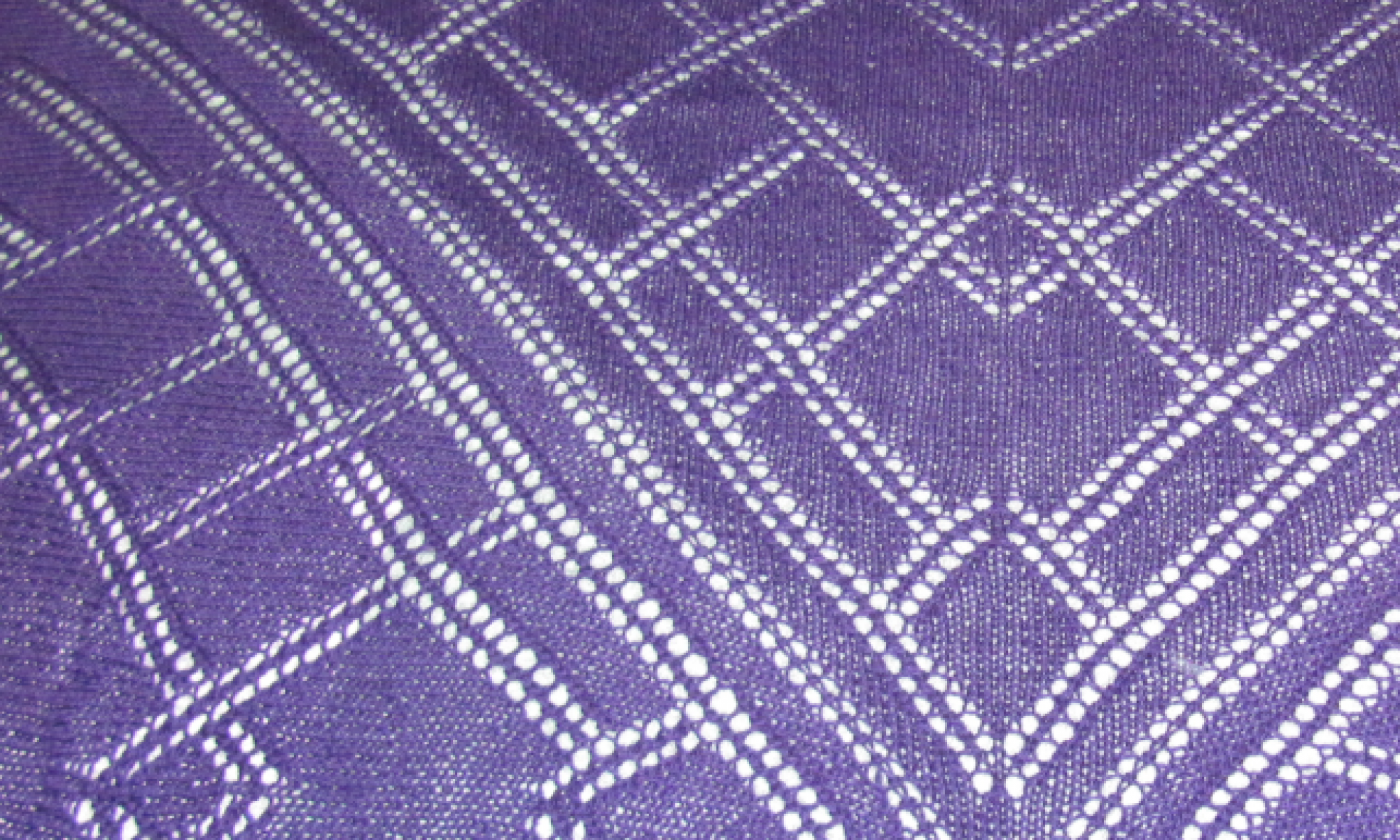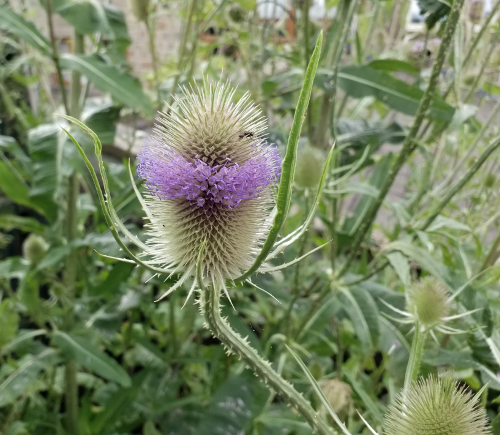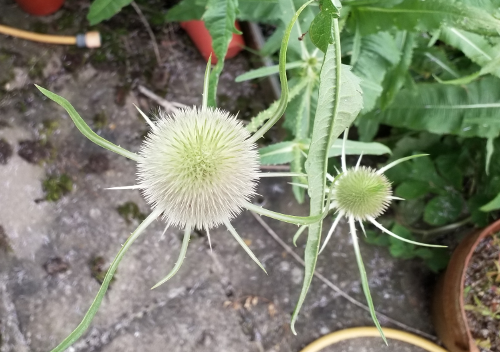This is the second in my collection of tam patterns based around the theme of Weeds, this pattern uses three colours of Jamieson’s Spindrift yarn to create a distinctive hat.
The teasel is a fascinating plant, very well guarded by sharp spikes along stem and leaf margins, with a mass of tiny lavender-coloured flowers bursting through the seed head in bands, starting with the centre of the flower head and then moving in waves down to the base and up to the tip. They may be little flowers but they nevertheless provide abundant nectar for bees, ants, and hoverflies, and once finished flowering the goldfinches move in to feast on the seeds.
Although the teasel does not generally provide food for humans, the young leaves are edible although one must take great care to avoid the spiny, stout hairs. Teasel leaves can be consumed raw, cooked or added to a smoothie. The root can be used in a tea or for making vinegar or tinctures. The root has many health benefits as it contains inulin and a chemical that destroys the itch mite causing scabies.
It does, also, have an important place in the history of fibre. Dipsacus fullonum or Fuller’s teasel, was widely used in textile processing, providing a natural comb for cleaning, aligning and raising the nap on fabrics, particularly wool. It differs from the wild type in having stouter, somewhat recurved spines on the seed heads. The dried flower heads were attached to spindles, wheels, or cylinders, sometimes called teasel frames, to raise the nap on fabrics (or tease the fibres). By the 20th century, teasels had been largely replaced by metal cards, which can be made uniformly and do not require constant replacement as the teasel heads wear. However, some people who weave wool still prefer to use teasels for raising the nap, claiming that the result is better; in particular, if a teasel meets serious resistance in the fabric, it will break, whereas a metal tool will rip the cloth.
The brown, oval, spiky seed heads of the teasel are a familiar sight in all kinds of habitats, from grassland to waste ground, even cultivated in gardens for their use as an ornament.
The the design for this tam was inspired by the spiny bracts that guard the seed head, and the overall pattern of tiny flattened triangles seen when you look deep into the seed head.
The Weeds Collection can be purchased from the Granary Knits Payhip Pattern Store.
- Shepherd’s Purse
- Poppy – TBA
- Wild Oats
- Teasel
- Thistle – TBA








